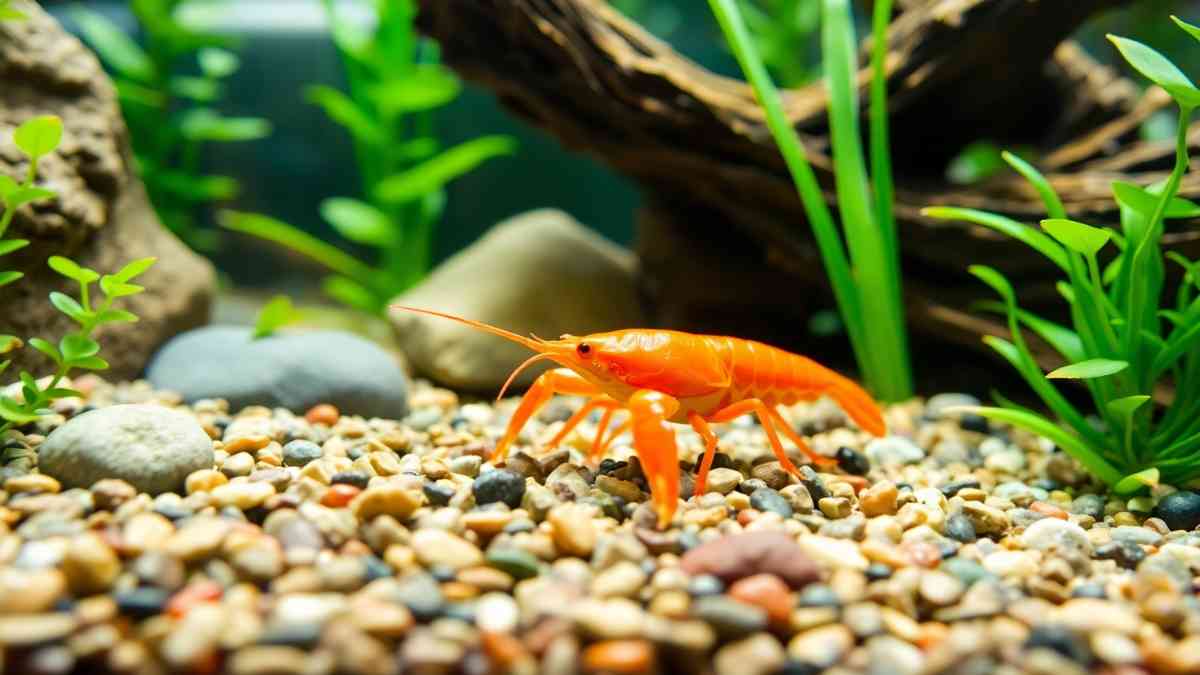Mexican Dwarf Crayfish: A Vibrant Freshwater Gem for Aquarists

The Mexican dwarf crayfish is a small, peaceful, and colorful freshwater invertebrate perfect for nano and community aquariums. Known scientifically as Cambarellus patzcuarensis, this species is native to Mexico and has become a favorite among aquarists due to its manageable care requirements, bold orange appearance, and compatibility with small tank mates.
Introduction to Mexican Dwarf Crayfish
The Mexican dwarf crayfish is a freshwater crustacean that combines beauty, personality, and practical size into one fascinating aquarium resident. Often referred to by the abbreviation “CPO” (from its orange variant Cambarellus patzcuarensis var. orange), this species hails from the warm waters of Mexico and has gained international popularity for being hardy, active, and relatively peaceful.
This species is a superb choice for aquarists looking to add something different to their tanks without the aggressive nature often associated with larger crayfish. Unlike their bigger cousins, these crayfish rarely attack fish and spend most of their time scavenging or hiding among plants and decorations.
Origin and Habitat
The native home of the Mexican dwarf crayfish is Lake Pátzcuaro in the Michoacán region of Mexico. This environment is characterized by its mild to warm temperatures, high mineral content, and dense aquatic vegetation. In their natural habitat, they reside among submerged roots, rocks, and plant debris, which offer shelter and opportunities for foraging.
Despite their origin in the wild, the version most aquarists encounter today is a selectively bred orange morph, developed for the aquarium trade. These vibrant colors do not occur naturally but have made the species especially desirable.
Physical Appearance and Size
One of the most striking features of the Mexican dwarf crayfish is its brilliant orange color, though some individuals may display reds or lighter hues. Their bodies are segmented and armored, with two small claws at the front used more for scavenging than defense.
Adult crayfish typically reach 1.5 to 2 inches in length, making them ideal for smaller tanks. Their small size and non-aggressive temperament distinguish them from larger and more destructive crayfish species.
Lifespan in a well-maintained aquarium is usually between 1.5 to 2 years. While relatively short-lived, their active nature and ease of breeding can make them a continuous presence in an aquarium.
Ideal Tank Setup
To keep your Mexican dwarf crayfish healthy and happy, tank setup matters significantly. Here’s what you need to know:
Minimum Tank Size:
A single pair can comfortably live in a 10-gallon tank. However, if you’re planning to keep multiple crayfish or mix them with fish or shrimp, consider at least 20 gallons.
Water Parameters:
-
Temperature: 68°F to 78°F (20°C to 26°C)
-
pH Level: 6.5 to 8.0
-
Water Hardness: Medium to hard (8–20 dGH)
Filtration and Flow:
Use a gentle filter like a sponge or a low-flow hang-on-back filter to avoid strong currents. Since crayfish are sensitive to poor water quality, a cycled tank with stable ammonia and nitrite levels at 0 ppm is essential.
Substrate and Decor:
Provide plenty of hiding spots using rocks, driftwood, and live or artificial plants. These are especially important during molting when crayfish are most vulnerable.
Behavior and Temperament
Mexican dwarf crayfish are curious and often entertaining to observe. They will patrol the tank bottom, investigating every crevice and scavenging for food. Compared to larger crayfish, they are notably less aggressive and can coexist with peaceful fish and invertebrates.
That said, they may display territorial behavior, especially among males. This is why ample space and cover are vital. Avoid overcrowding or combining multiple males in tight spaces.
While they usually don’t harm fish, slow-moving or bottom-dwelling fish might still be at risk, especially if they are sick or sleeping. It’s best to monitor their interactions when introducing new tank mates.
Feeding Habits
As omnivorous scavengers, Mexican dwarf crayfish will eat almost anything offered. A varied diet will promote vibrant coloration and healthy molts.
Recommended Foods Include:
-
High-quality sinking pellets
-
Blanched vegetables like zucchini, spinach, and peas
-
Frozen or live foods such as bloodworms or brine shrimp
-
Algae wafers and plant detritus in the tank
Feed once daily in moderate amounts. Overfeeding can lead to water quality issues and algae blooms, so remove uneaten food after a few hours.
Molting Process
Like all crustaceans, Mexican dwarf crayfish molt to grow. During this time, they shed their exoskeleton and emerge with a soft shell that hardens over several hours or days. Molting can be stressful, and they are vulnerable to attacks, even from typically friendly tank mates.
Ensure your tank has hiding places where molting individuals can stay safe. It’s also wise to leave the old exoskeleton in the tank temporarily, as crayfish often consume it to reabsorb calcium and other minerals.
Breeding Mexican Dwarf Crayfish
Breeding is quite straightforward if you keep males and females together. They reach maturity around 3 to 4 months of age, and mating usually happens shortly after the female molts.
Breeding Process:
-
Male mounts the female and deposits sperm.
-
The female carries 20–60 fertilized eggs under her tail.
-
After around three weeks, the eggs hatch into miniature crayfish.
-
The young stay under the mother’s tail for a few days before venturing out.
To maximize survival rates of the fry, provide extra hiding spaces and consider separating them from adults. Some adults may prey on their offspring, especially if food is scarce.
Suitable Tank Mates
Because of their peaceful nature, Mexican dwarf crayfish can coexist with a range of other species, provided tank conditions are met.
Good Tank Mates:
-
Small community fish (e.g., neon tetras, rasboras)
-
Fast-swimming fish that occupy upper levels
-
Snails like Nerites or Mystery snails
-
Peaceful shrimp such as Amano or Ghost shrimp (with caution)
Avoid:
-
Aggressive or predatory fish like cichlids or bettas
-
Slow bottom-dwellers that may get nipped
-
Other aggressive crayfish species
Introducing any new species should be done gradually with careful observation to ensure compatibility.
Common Health Issues
Mexican dwarf crayfish are hardy but not immune to poor water conditions or stress. Common health concerns include:
-
Failed molts due to low calcium or poor water quality
-
Bacterial infections from injuries or contaminated water
-
Lethargy or hiding due to inadequate space or bullying
Maintain optimal water parameters and avoid copper-based medications, as they are toxic to invertebrates.
Conservation and Ethical Considerations
The wild form of Cambarellus patzcuarensis is considered endangered in its native region due to pollution and habitat degradation. However, the orange variant found in aquariums is captive-bred and not sourced from wild populations.
Always buy from reputable breeders or stores that use sustainable practices. Avoid releasing aquarium species into local waterways, as this can disrupt ecosystems.
Conclusion
The Mexican dwarf crayfish is a delightful, eye-catching addition to freshwater tanks. Its manageable care needs, peaceful disposition, and striking appearance make it a top pick for beginner and experienced aquarists alike.
Whether you’re setting up a species-only tank or integrating them into a lively community setup, these crayfish can add both functionality and flair. With proper care, they’ll thrive, breed, and keep your tank floor clean and active.
Bring vibrant life to your tank—choose a Mexican dwarf crayfish today!



